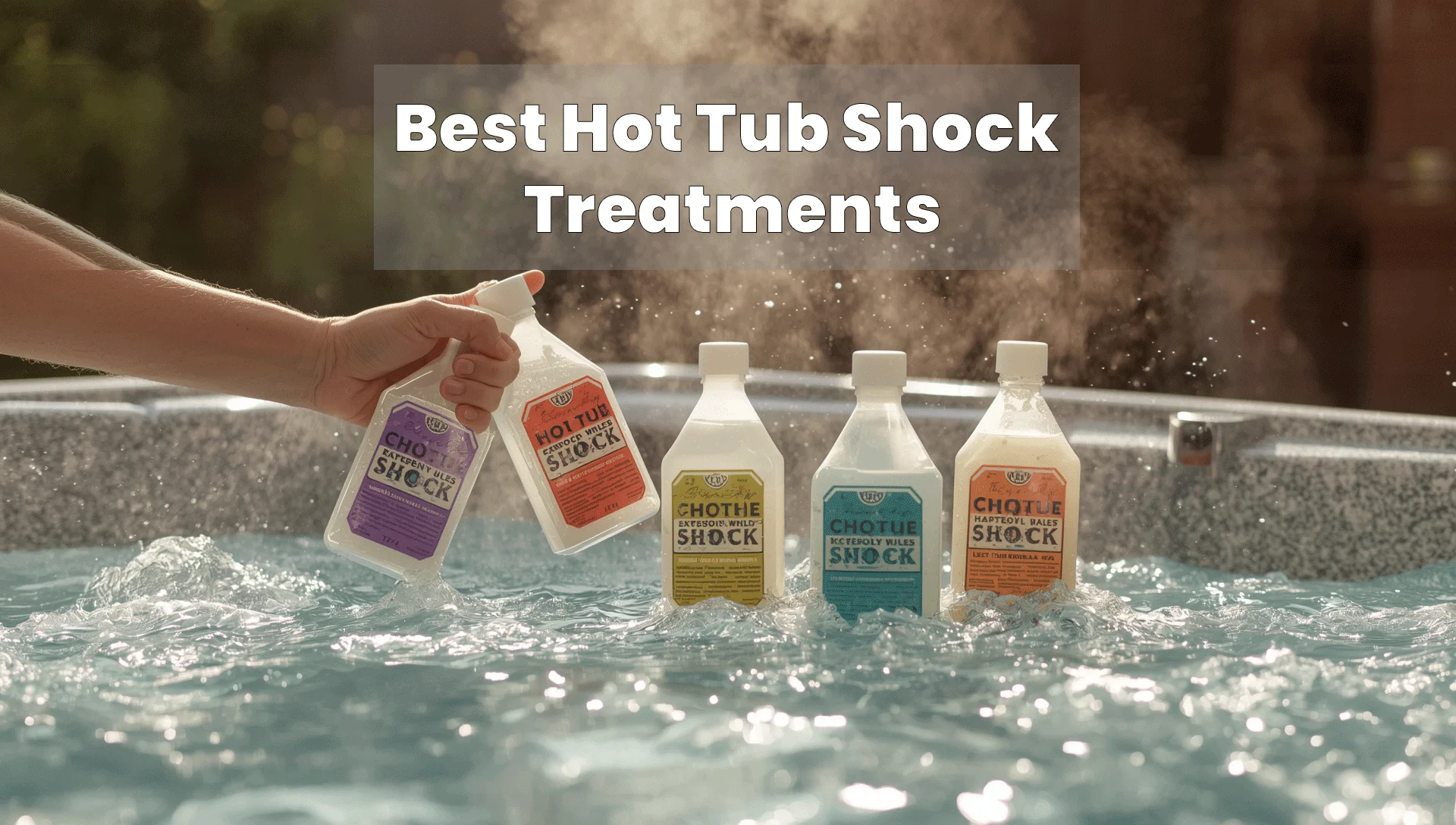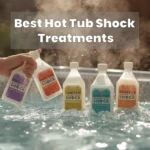Selecting the most suitable hot tub shock treatment plays an important role in keeping spa water clean, clear, and safe. There are a lot of different products on the market, and it is sometimes difficult to understand which one is the best. This guide will aid you in knowing the best brands, their characteristics, and how to choose the appropriate product in your hot tub.
In this guide, we will cover:
- Top hot tub shock brands
- Product types and their uses
- Pros and cons of each product
- Use and type of spa recommendations
👉 Our main guide Hot Tub Shock Treatment: Complete Guide for Clean and Safe Spa Water relates to this article.
Top Hot Tub Shock Treatments
1. Clorox Spa Shock
Key Points:
- Chlorine-based shock
- Quickly acts on bacteria, algae, and viruses
- Best suited to deep cleaning and post heavy usage
Pros:
- Strong disinfectant
- Widely available
- Affordable
Cons:
- Strong chlorine smell
- Must wait 24 hours to use
2. Leisure Time Spa Shock
Key Points:
- Oxidizing shock which is not chlorine
- Oxygen-based formula
- Best on a weekly maintenance
Pros:
- Gentle on skin
- Short wait time (15–30 minutes)
- No chlorine odor
Cons:
- Should be applied with bacteria sanitizer
Read More: Chlorine vs Non-Chlorine Hot Tub Shock: Which one to use?
3. SpaGuard Bromine Shock
Key Points:
- Bromine-based shock
- Complimentary with bromine spa sanitizer
- Holds water clarity longer
Pros:
- Less odor than chlorine
- Gentle on skin
- Effective for indoor spas
Cons:
- Waiting time: 4–6 hours
- Slightly more expensive
4. Clorox Non-Chlorine Spa Shock
Key Points:
- Oxygen-based
- Best suited to those who need mild maintenance
- Breaks up oils and organic debris
Pros:
- Quick acting
- Mild on skin
- No strong chemical odor
Cons:
- The alternative to chlorine or bromine
- Needs periodic observation
5. AquaChek Spa Shock
Key Points:
- Chlorine and non-chlorine both available
- Appropriate to be used in routine maintenance and high use
- Easy to measure and apply
Pros:
- Reliable brand
- Maintains water balance
- Convenient packaging
Cons:
- A little above generic products
- Water needs to be tested correctly
Recommendations by Usage
- Weekly Maintenance: Non-chlorine shock such as Leisure Time or Clorox Non-Chlorine Spa Shock
- Heavy Use or Parties: Chlorine shock like Clorox Spa Shock
- Bromine Sanitizer Indoor Spa: SpaGuard Bromine Shock
- Green Choice: Oxygen or enzyme shocks
Safety Tips
- Wear gloves to work with shock chemicals
- Keep chemicals out of the reach of children and pets
- Do not confuse various forms of shocks without reading instructions
- Before application, check water balance: alkalinity, sanitizer, pH
Similar Read: Hot Tub Safety: Wait Time After Shocking Water
Conclusion
The correct hot tub shock treatment is determined by whether you use a hot tub, the nature of the sanitizer, and the water maintenance program. There are chlorine shocks, which are best used to deep clean, non-chlorine shocks, which are best used on a weekly basis, and bromine shock, which are best used in bromine-based spas. The use of the best quality products ensures safe, clear, and enjoyable spa water.
FAQs
Am I able to alternate chlorine with non-chlorine shock?
Yes, rotating can keep the water in balance and performance.
How many shock treatments should I have?
Weekly non-chlorine, chlorine weekly after heavy use, chlorine monthly after deep cleaning.
Does this mean that all shock products are safe on sensitive skin?
The non-chlorine/non-bromine alternatives are typically mild; chlorine will irritate.
Is it possible to deep clean with environmentally friendly shocks?
Green shocks should not be used in heavy cleaning, but only in routine maintenance.
Should I wait after shocking and use the spa?
Yes, chlorine: 24 hours, non-chlorine: 15–30 minutes, bromine: 4–6 hours.







